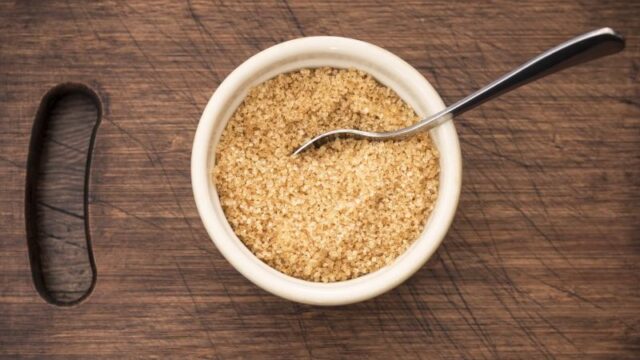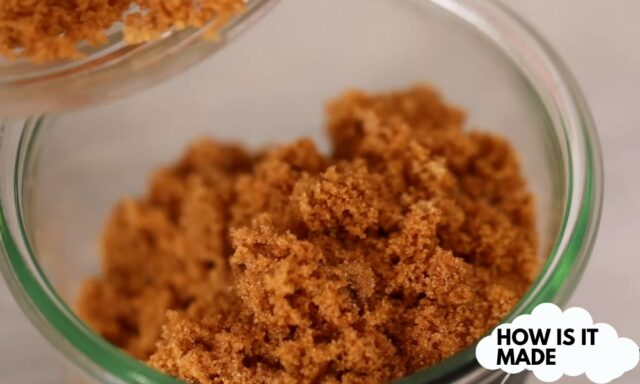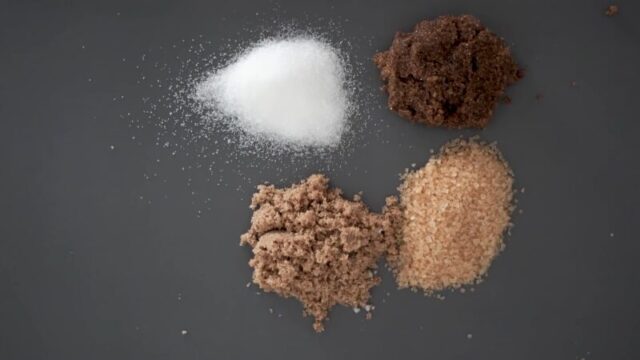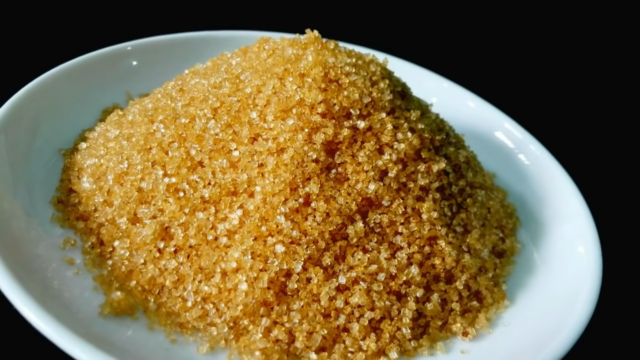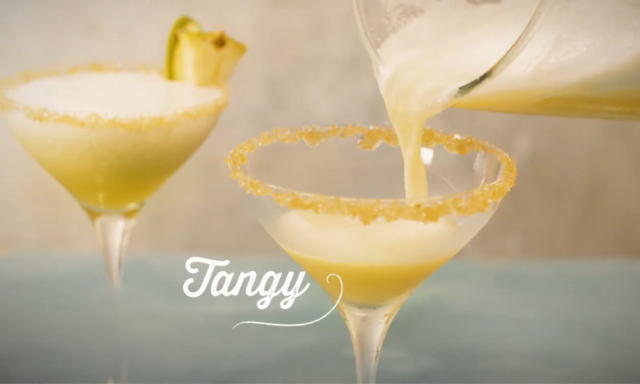
Ah, Demerara sugar, is a sweet indulgence that has truly transformed my culinary experiences.
As a passionate home cook, I always look for different ways to elevate my creations and add that extra touch of magic to my dishes. And that’s when I discovered this one.
I did my homework and learnt everything about it, from its origins and unique characteristics to its diverse applications and even its sustainable production, and now I would love to share everything I’ve discovered with you.
So, let’s dive in and discover why it is a true game-changer in the world of culinary delights.
What is it?
Often hailed as a culinary gem, is a type of cane sugar that stands out with its distinct characteristics.
It is characterized by its large, golden-brown crystals that add a delightful crunch and visual appeal to various dishes. Add a delightful crunch and visual appeal to various culinary creations. It has a natural molasses content and a slightly sticky texture.
It takes its name from the Demerara region in Guyana, where it was first produced. The fertile soils and unique climate of the region contribute to the its distinctive flavor profile.
How is it made?
The process begins by extracting cane juice through crushing and pressing cane stalks. The juice is then filtered to remove impurities.
The cane juice is heated and concentrated, leading to the formation of sugar crystals. The resulting syrup is then cooled and spun in centrifuges to separate the crystals from the remaining molasses.
Differences Between Demerara and White Sugar
Demerara sugar sets itself apart from the commonly used white sugar in various ways. Let’s examine the differences:
Contrasting attributes: It possesses a distinct flavor profile with subtle hints of molasses, imparting a delightful depth of taste. In contrast, white sugar is refined and lacks the natural molasses content.
Variances in flavor, color, and texture: It boasts a caramel-like flavor and a golden-brown color, which can add complexity to your culinary creations. White sugar, on the other hand, has a neutral flavor and a stark white appearance.
Application and usage differences: While white sugar is versatile and suitable for a wide range of recipes, Demerara shines in dishes where its unique flavor and texture can be fully appreciated. It’s particularly delightful in coffee, tea, and baked goods.
Demerara vs. Brown Sugar: What’s the Difference?
Demerara is often compared to brown sugar due to their shared characteristics, but they do have notable distinctions.
Distinctive characteristics and production processes: While both undergo minimal processing, their production methods differ.
Demerara sugar retains more of the natural molasses, resulting in larger crystals and a less sticky texture compared to brown sugar. It has a drier texture and a less intense molasses flavor compared to the latter.
Brown sugar, on the other hand, has a stickier texture and a stronger molasses taste.
Flavor profiles and suitable culinary uses: It offers a subtle caramel flavor that adds depth to beverages, baked goods, and desserts, whereas brown sugar, with its pronounced molasses taste, is often used to bring richness and moistness to recipes.
Culinary Uses
Demerara sugar’s distinctive flavor can elevate a range of dishes, including cookies, cakes, pies, crumbles, and sauces. Its larger crystals create delightful pockets of crunch and add a visually appealing touch.
It pairs exceptionally well with warm spices like cinnamon and nutmeg. It can be used as a delightful topping for crème brûlée or a sweetener in homemade granola.
If you don’t have it on hand, light brown sugar can be a suitable substitute in most recipes.
Benefits and Drawbacks
As with any ingredient, Demerara sugar comes with its own set of benefits and considerations.
Health benefits compared to refined sugars:
- It retains some nutrients from the sugarcane, such as small amounts of minerals like potassium and magnesium. However, it’s important to note that the quantities are relatively small, and it should still be consumed in moderation.
- It contains trace amounts of minerals and retains some of the molasses, providing a subtle boost in flavor and potential health benefits.
Drawbacks:
- Like any sugar, it should be consumed mindfully due to its calorie content.
- It can also impact blood sugar levels, so individuals with diabetes or other blood sugar concerns should exercise caution.
Using it in Beverages
Demerara sugar dissolves beautifully in hot liquids, making it an excellent choice for enhancing the flavor of coffee and tea, adding a caramel note. It can also elevate the sweetness and depth of flavor in iced coffees, lemonades, and cocktails. Use it to create rich simple syrups for cocktails or to sweeten homemade flavored syrups for refreshing beverages.
Baking and Desserts
Baking enthusiasts rejoice! Demerara sugar brings its unique attributes to the world of baking and desserts.
It adds depth of flavor and texture to various baked goods, such as cookies, pies, crumbles, and muffins. Its larger crystals create delightful pockets of crunch and a visually appealing golden-brown color.
Sprinkle it on top of muffins or pies before baking for a delightful caramelized crunch. Incorporate it into streusel toppings for added texture and depth of flavor.
Storage and Shelf Life
Proper storage ensures that your sugar remains fresh. Store it in an airtight container in a cool, dry place away from direct sunlight. This helps prevent moisture absorption and ensures its long-lasting freshness.
When stored properly, it can have a shelf life of several years. However, exposure to moisture or humidity can lead to clumping or a change in texture. If you notice significant clumping or an off odor, it’s best to replace it.
Sustainable and Ethical Aspects of its Production
Some producers prioritize sustainable practices, such as minimizing water usage, reducing waste, and promoting soil health. Fair trade certifications ensure that farmers receive fair compensation for their work.
Sustainable Demerara sugar production involves minimizing the environmental impact through responsible farming practices and resource management. It’s crucial to support brands that prioritize these practices.
FAQs:
Is it considered a natural sweetener?
It is less refined compared to white sugar, making it closer to its natural form. However, it is still a form of sugar and should be consumed mindfully.
Does it have a lower glycemic index than white sugar?
It has a slightly lower glycemic index, meaning it has a slower impact on blood sugar levels. However, it should still be consumed in moderation.
Can it be used in savory dishes?
While it is primarily used in sweet dishes, it can also be used in some savory recipes to add a touch of sweetness and depth of flavor.
Can it be used in cold desserts like ice cream?
Yes, it can be incorporated into cold desserts like ice cream to add a delightful caramel flavor and a slight crunch.
Can it be used in homemade granola or trail mix?
Absolutely! It adds a delightful crunch and a hint of caramel flavor to homemade granola or trail mix.
Conclusion
Congratulations! You’ve embarked on a journey to unravel the captivating world of Demerara sugar. We’ve explored its unique characteristics, learned about its origins, and discovered its versatile applications in various culinary endeavors.
From enhancing the flavor and texture of baked goods to adding depth to beverages, it has secured its place as a beloved ingredient. Remember to enjoy it mindfully, considering its impact on health and blood sugar levels.
So go forth, embrace the richness of Demerara sugar, and let your creativity soar in the kitchen!

